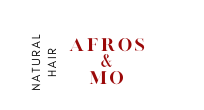
Know Your Hair Type
KNOW YOUR HAIR TYPE
Agatha walked into our space; she was angry and frustrated because her hair could not easily be combed like that of her sister Irene. She was convinced that she had the worst natural hair type; the kind that gives you lots of shrinkage and much volume. Irene, on the other hand, had an almost shrinkage free mane and that meant that combing came easy for her. Irene was on the other hand frustrated by the fact that she could not style her hair in the beautiful way her sister usually did
We sat and listened to each of their woes until all had been poured out and realized that they both did not know their hair types. This had made it hard for them to manage their hair and to appreciate it as well. So we got down to explain this in detail to them. Read on for the explanation they got
Natural hair comes in kinks, curls, and coils. You may have a combination of, say, kinky, coily, and curly hair. It does sound like confusion, but you are best able to tell your hair type when it is very wet. The 1s are straight, 2s are wavy, 3s are curly, and 4s are coily.
Straight hair is type 1: Straight hair is the most resilient hair of all. It is hard to damage and next to impossible to naturally curl this hair texture. Because the natural oil produced in the sebaceous glands of the scalp gently works its way from the scalp to the ends without the interference of curls or kinks, it is the oiliest hair texture of all.
Wavy hair is type 2: It lies somewhere between straight and curly hair. Wavy hair is typically more prone to frizz. Because wavy hair is more prone to frizz, anti-frizz/humidity protective stylers are key for creating and keeping gorgeous waves. Keep your fingers out of wavy hair, the more you tousle the more frizz you experience.
Curly hair is type 3: If you pull a strand of type 3 curly, you will notice it has a definite S shape. Granted, the S may be a lower case s or upper case S, or it may even resemble a Z on some occasions. However, there is a definite curl pattern in place, with or without products. This hair type is damage-prone and lack of proper care renders dull curls. To style curly hair, always start with a cleanse, then condition, moisturize, and then apply your styling product of choice before pinning it
Kinky hair is type 4: This tightly coiled hair is quite fine and fragile. It is wiry, and delicate by nature. Each strand usually has a zig-zag pattern. Kinky hair is the driest hair type, thus it is more prone to breakage and requires a gentle touch. Kinky hair grows at the same rate as other hair textures, however, if not treated well it breaks more than other textures. You have to treat this hair type like a fine satin cloth – cleanse gently, detangle softly, and avoid harsh chemicals. Because it is dry by nature, and therefore breaks easily, it needs added moisture, daily.
Having understood this knowledge, the two sisters have not only embraced their hair types but have also learned how to take care of it without much ado. We do hope that this has been equally helpful to you.
That is the natural hair way, dear reader!


Racheal
thank you very much for this
personally i have discovered that i am a type 4, my hair is extremely coilded yet so fine and it breaks alot especially the hair line, i would love to know how to take care of it,products,routine and all
afrosandmohairbeauty
Racheal, thank you so much for visiting. Great to know where you place your hair type and identifying the challenges that come with it. Indeed it’s a fine strand hair type, really fragile and prone to breakage. As you come into the salon for your regular deep conditioning, please do engage with us on these matters during your visit and you will surely get the assistance that you require.